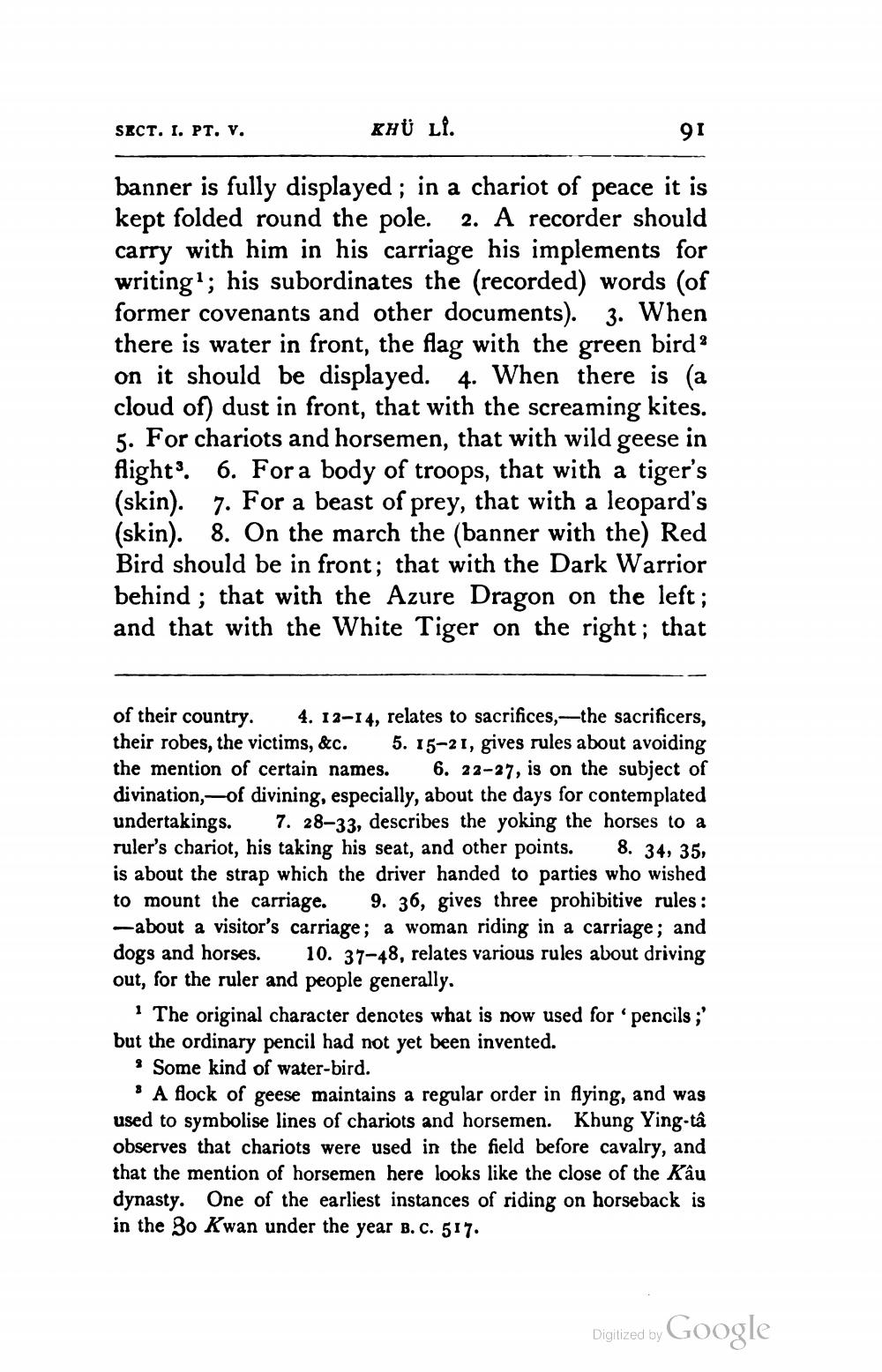________________
SECT. I. PT. v.
KHU Lf.
91
banner is fully displayed ; in a chariot of peace it is kept folded round the pole. 2. A recorder should carry with him in his carriage his implements for writing; his subordinates the (recorded) words (of former covenants and other documents). 3. When there is water in front, the flag with the green bird? on it should be displayed. 4. When there is (a cloud of) dust in front, that with the screaming kites. 5. For chariots and horsemen, that with wild geese in flights. 6. For a body of troops, that with a tiger's (skin). 7. For a beast of prey, that with a leopard's (skin). 8. On the march the (banner with the) Red Bird should be in front; that with the Dark Warrior behind ; that with the Azure Dragon on the left; and that with the White Tiger on the right; that
of their country. 4. 12-14, relates to sacrifices,--the sacrificers, their robes, the victims, &c. 5. 15-21, gives rules about avoiding the mention of certain names. 6. 22-27, is on the subject of divination, of divining, especially, about the days for contemplated undertakings. 7. 28–33, describes the yoking the horses to a ruler's chariot, his taking his seat, and other points. 8. 34, 35, is about the strap which the driver handed to parties who wished to mount the carriage. 9. 36, gives three prohibitive rules: -about a visitor's carriage; a woman riding in a carriage; and dogs and horses. 10. 37-48, relates various rules about driving out, for the ruler and people generally.
The original character denotes what is now used for 'pencils ;' but the ordinary pencil had not yet been invented.
9 Some kind of water-bird.
: A flock of geese maintains a regular order in flying, and was used to symbolise lines of chariots and horsemen. Khung Ying-tâ observes that chariots were used in the field before cavalry, and that the mention of horsemen here looks like the close of the Kâu dynasty. One of the earliest instances of riding on horseback is in the 3o Kwan under the year B. c. 517.
Digitized by Google




